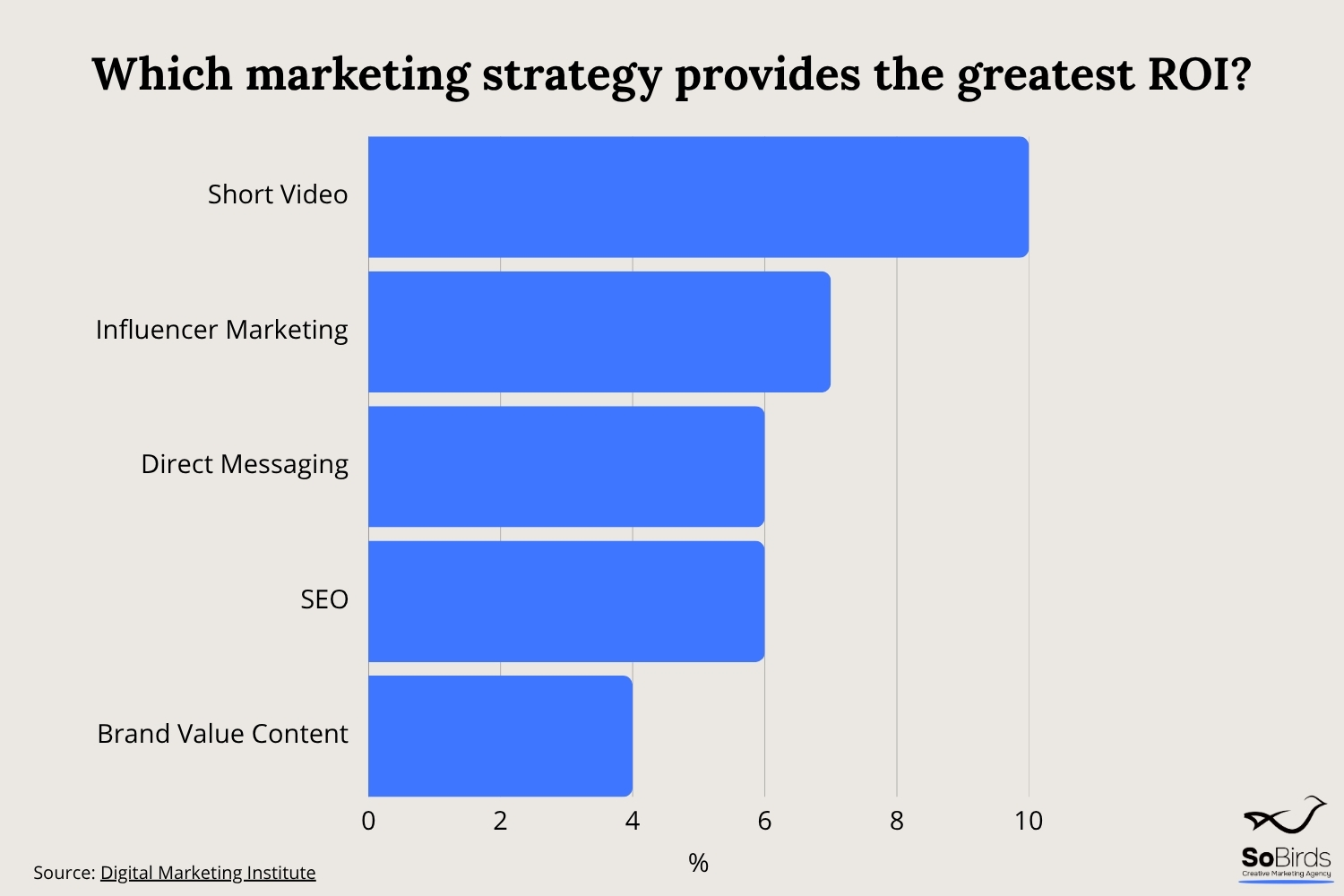Just a few years ago, platforms like TikTok and Instagram seemed to push traditional YouTube out of the spotlight. If a brand wasn’t posting short videos, it risked falling behind. Quick, punchy content became the dominant format online, especially in video marketing.
But today, more and more people are asking: Is shorter really better?
Why Did Short-Form Take Off?
TikTok didn’t rise to the top by accident. It delivers exactly what modern users want:
- Mobile-first design (you create and consume everything on your phone)
- Fast pace (short, emotional bursts of content)
- Smart algorithms (personalized feeds in seconds)
- Low barrier to entry (anyone can become a creator)
Short-form content is perfect for grabbing attention – especially when talking to Gen Z and Gen Alpha. It’s also great for behind-the-scenes content, trending formats, or showing a more casual, human side of a brand.
The Numbers Don’t Lie
Short video delivers the top marketing ROI, outperforming other strategies. TikTok’s high-engagement, bite-sized content is key for quick impact and serious returns.

And Yet… YouTube’s Still Here
Far from disappearing, YouTube remains a powerful platform – particularly when depth and trust matter.
It’s where brands can:
- Share in-depth tutorials
- Explain complex topics
- Showcase expertise and experience
- Build long-term relationships with their audience
And let’s not forget: after Google, YouTube is the second largest search engine in the world. That makes it a powerful inbound channel with massive SEO potential.
Most importantly, a well-made YouTube video can work for months, even years. It’s not a quick viral moment — it’s a steady stream of value and traffic.
Rivalry or Partnership?
These days, brands aren’t asking “TikTok or YouTube?” – they’re asking “How do we connect the two?”
- A Short or Reel can be a teaser for a full-length webinar
- A YouTube interview clip can become a standalone TikTok
- TikTok draws people in, while the bio link sends them to a deeper dive on YouTube
As YouTube CEO Neal Mohan said:
“YouTube helps creators build deep relationships with audiences and offers them more tools to make a living doing what they love. Hundreds of thousands of channels made money on YouTube for the first time last year.”
A smart video strategy allows you to repurpose one piece of content across multiple channels. That saves time and builds brand consistency.
Which Format Should You Choose?
It depends on four key factors:
- Where is your target audience?
- What’s your goal? (Brand awareness? Trust? Sales?)
- What kind of content can you create? (Short-form? Educational?)
- What resources do you have? (Time, budget, team?)
The goal isn’t to be everywhere — it’s to be where you matter, and where your content performs.
What’s Next in Video Marketing?
The line between platforms is blurring. TikTok is testing longer videos. YouTube is investing heavily in Shorts. AI tools are making editing easier than ever. And audiences want content that feels more and more personal.
One thing hasn’t changed: video is the language of the internet. Short-form and long-form aren’t competitors — they’re two sides of the same strategy.
That’s exactly what we focus on at SoBirds. We help brands, founders, and growing teams thrive with smart, effective video marketing – whether it’s short-form content that stops the scroll or long-form formats that build lasting trust. From strategy to execution, we make sure your message shows up where it matters most.
You may also be interested in other articles:
Influencer Marketing in Poland 2025 – Trends & Costs
Effective PR Measurement. What Are the Key Metrics for 2025?
Influencer Marketing for Small Businesses: Is It Worth It?
And if you enjoyed this article, please share it on your social media or send it to someone who might find it useful. Also, follow us on Instagram and LinkedIn. Thanks!

